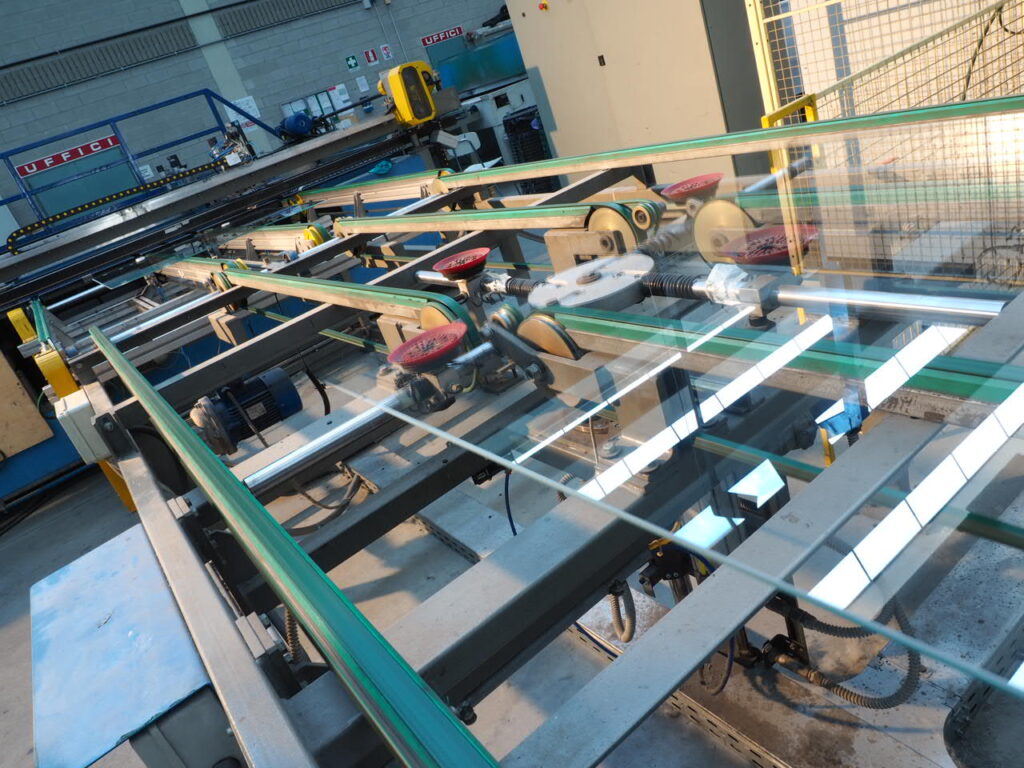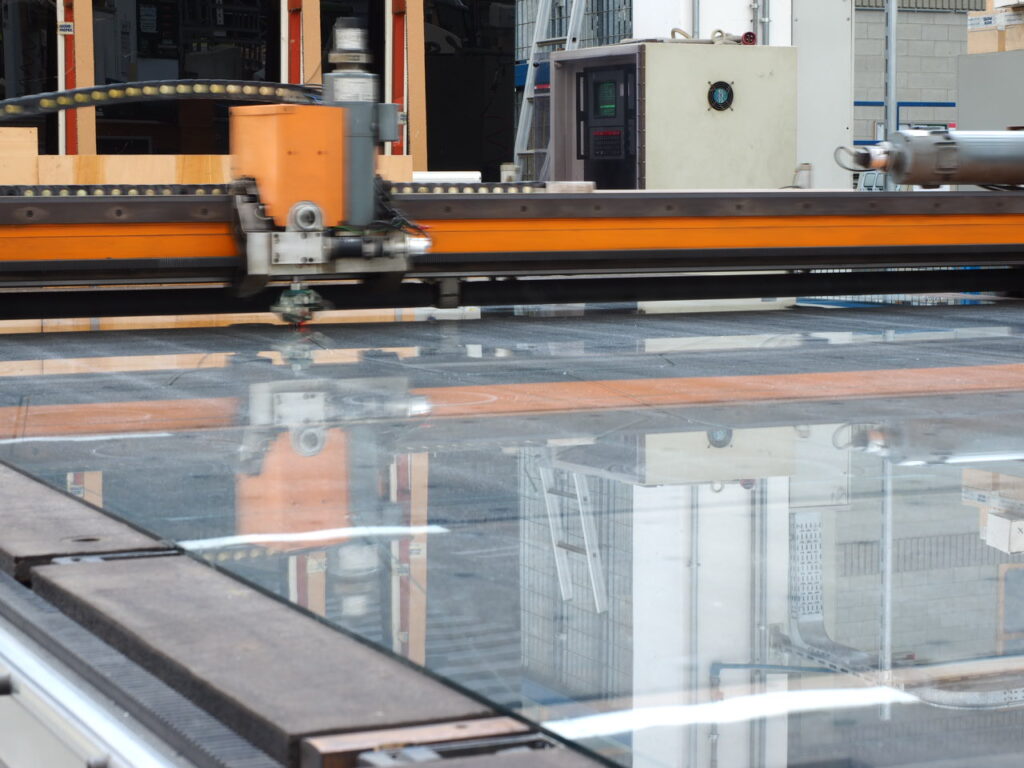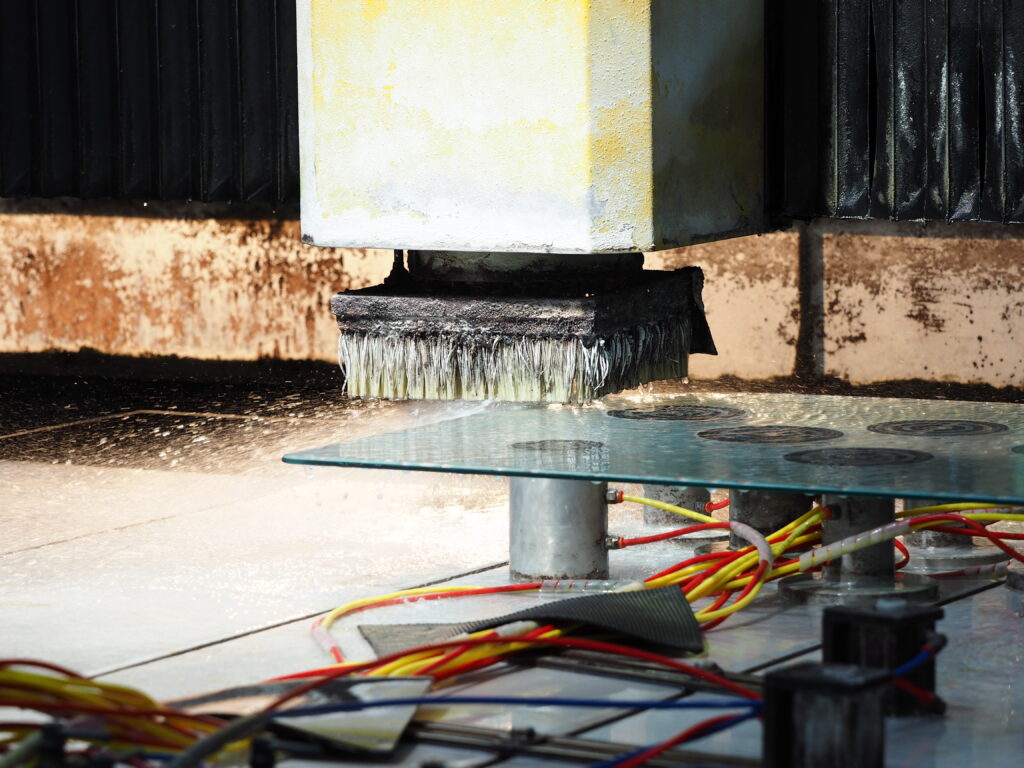phases


Our corporate industrial process starts by purchasing “glass,” the raw material, classified and divided by thickness and colour.
Then, subsequent operative phases that feature a considerable degree of automation yield the finished product we offer customers.
The first operative phase is designed to obtain, from the first sheet of glass (6000mm x 3200mm), that which will be our final product in terms of perimeter definition. The item that issues presents the dimensions of the finished product with the additional materials required for subsequent processing and/or withdrawal. It has sharp edges. Processing is performed on a glass cutting bench with number control.


The next phase is carried out by an automated system to remove the sharp edges and define the final dimensions of the perimeter.
Processing is performed with diamond tipped utensils managed by CNC systems.
When required by specifications, any drilling is carried out in line on the same plant. Drilling too is performed with diamond tipped utensils that are electronically controlled to guarantee precision and repetitive manufacturing.


The subsequent phase, if required by product specifications, is called “Silk-Screening”. It is implemented on Automatic or Semi-automatic lines, depending on the formats and volumes
The motif used during this processing phase is positioned by automatic systems on a glass surface on which serigraphic paints/pastes are applied with appropriate tools known as “Silk Screen Frames” made for the specific motif. In order to allow the details to be defined or other colours to be applied, said product must be dried. This action is performed in line with the depositing process through periods in dedicated ovens that are managed to suit the processed product.


The “Bending and Toughening” process is performed at this point. This is the core phase of the production process. The previously defined glass is placed in the section of the oven that increases glass temperature over 600°C. At this point the item is transferred to the bending section where in a very short time, barely a few seconds, special moulds are used to mould the glass, which is then very rapidly processed to achieve the toughened section. Hence, dedicated forced air devices are used for rapid cooling, which endows the glass with the safety and resistance features typical of toughened glass.


Products obtained at the end of the “Bending and Toughening” phase are divided into two groups, namely:
Nuova Protex’s Glass Toughening Systems, which are automatically managed by cutting edge systems, provides effective solutions in terms of complexity, dimension and volumes.